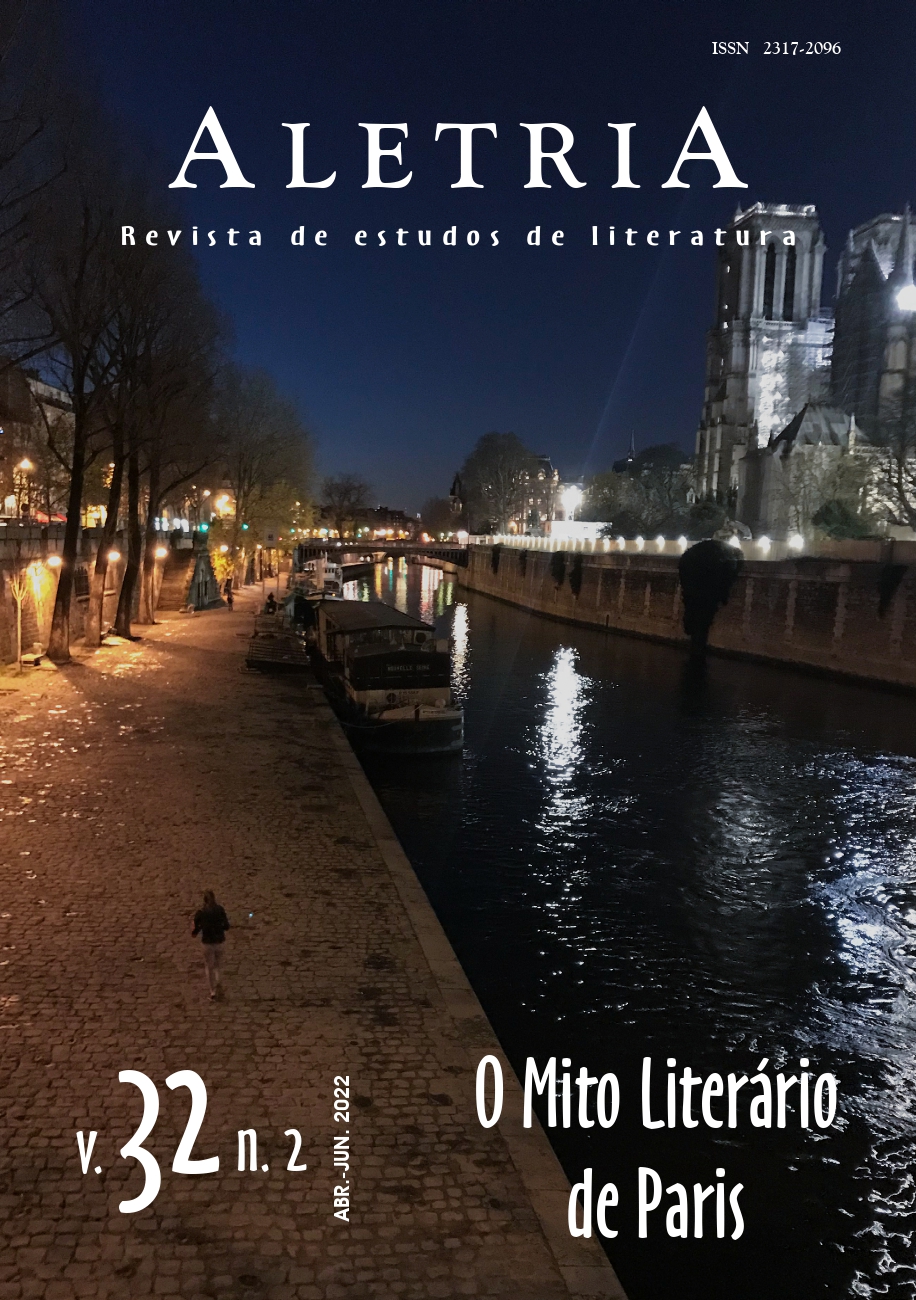The Unusual and Secret Paris of Raymond Queneau, seen as a practice of fraternal style
DOI:
https://doi.org/10.35699/2317-2096.2022.38214Keywords:
Paris, history, myth, paths, famous people, dates, originsAbstract
From 1936 to 1938, the writer Raymond Queneau undertook to “seriously” entertain the readers of the daily newspaper L’Intransigeant with a section of questions and answers on Paris, renewed every day. But beyond the literary game, the tireless walker also seeks to dust off and update the modern mythology of the capital, in a format accessible to everyone.
Downloads
References
BAUDELAIRE, Charles. Au lecteur. In : BAUDELAIRE, Charles. Les fleurs du mal. Paris : Poulet-Malassis et de Broise éditeurs, 1857. p. 5.
BAUDELAIRE, Charles. Le cygne. In : BAUDELAIRE, Charles. Les fleurs du mal. Paris : Poulet-Malassis et de Broise éditeurs, 1861a. p. 202.
BAUDELAIRE, Charles. Mon cœur mis à nu. In : BAUDELAIRE, Charles. Œuvres posthumes. Paris : Maison Quantin, 1887b. p. 92.
BIBLIOTHEQUE NATIONALE DE FRANCE (Gallica). L’intransigeant [23 novembre 1936]. Paris, 19 nov. 2011. Disponible dans : <https://gallica.bnf.fr/ark:/12148/bpt6k795302n#>. Accès sur: 15 déc. 2021.
BRUNEL, Pierre. Préface. In : BRUNEL, Pierre. Dictionnaire des mythes littéraires. Monaco : éd. du Rocher, 1994. p. 8.
FRANÇAIS : Place Hébert, Paris, vers 1900. In : WIKIPEDIA : the free encyclopedia. [San Francisco, CA : Wikimedia Foundation, 2010]. Disponible dans : <https://fr.m.wikipedia.org/wiki/Fichier:Paris_Place_Hebert_1900.png>. Accès sur: déc. 2021.
FONTAINE MOLIÈRE au XIXe siècle. In : WIKIPEDIA: the free encyclopedia. [San Francisco, CA: Wikimedia Foundation], 22 dec. 2015. Disponible dans : <https://fr.wikipedia.org/wiki/Fichier:Fontaine_Moli%C3%A8re_au_XIXe_si%C3%A8cle.JPG>. Accès sur: 30 nov. 2021.
HILLAIRET, Jacques. Dictionnaire historique des rues de Paris. Paris : éditions de Minuit, 1963.
LAZARE, Félix ; LAZARE, Louis. Dictionnaire administratif et historique des rues de Paris et de ses monuments. Paris : [s.n.], 1844.
QUENEAU, Raymond. Connaissez-vous Paris ?. Paris : Gallimard, 2011. (Collection Folio)
QUENEAU, Raymond. Exercices de style. Paris : Gallimard, 1947. (Collection Blanche)
QUENEAU, Raymond. Journaux 1914-1965. Paris : Gallimard, 1996.
QUENEAU, Raymond. L’amphion. In : QUENEAU, Raymond. Les Ziaux. Paris : Gallimard, 1943. p. 23.
QUENEAU, Raymond. Les fleurs bleues. Paris : Gallimard, 1965.
QUENEAU, Raymond. Les Ziaux. In: QUENEAU, Raymond. L’instant fatal. Paris: Gallimard, 1966. p. 23. (Collection Poésie).
QUENEAU, Raymond. Pierrot mon ami. Paris : Gallimard, 1942.
QUENEAU, Raymond. Zazie dans le métro. Paris : Gallimard, 1959.
RUE de l’Abre-sec (Paris). In: WIKIPEDIA: the free encyclopedia. [San Francisco, CA: Wikimedia Foundation, 2010]. Disponible dans: https://fr.wikipedia.org/wiki/Rue_de_l%27Arbre-Sec_(Paris). Accès sur: déc. 2021.
ROCHEGUDE, Marquis Félix de. Promenades dans toutes les rues de Paris par arrondissements. Paris : Librairie Hachette et Cie, 1910.
ROUBAUD, Jacques. La fabrique de l’histoire. Paris : Créaphis, 2 juillet 2007. Entretien avec Emmanuel Laurentin.
Downloads
Published
How to Cite
Issue
Section
License
Copyright (c) 2022 Étienne Crosnier (Autor)

This work is licensed under a Creative Commons Attribution 4.0 International License.
Authors who publish with this journal agree to the following terms:Authors retain copyright and grant the journal right of first publication with the work simultaneously licensed under a Creative Commons Attribution Non-Commercial No Derivatives License that allows others to share the work with an acknowledgement of the work's authorship and initial publication in this journal.Authors are able to enter into separate, additional contractual arrangements for the non-exclusive distribution of the journal's published version of the work (e.g., post it to an institutional repository or publish it in a book), with an acknowledgement of its initial publication in this journal.Authors are permitted and encouraged to post their work online (e.g., in institutional repositories or on their website) prior to and during the submission process, as it can lead to productive exchanges, as well as earlier and greater citation of published work (See The Effect of Open Access).





